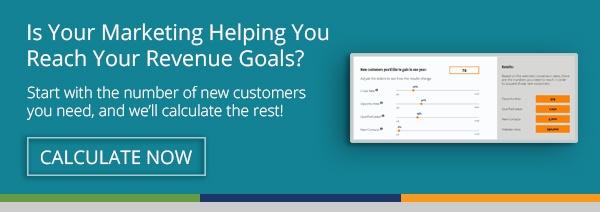The days of uninformed cold calls, mass spam emails, and the all-powerful salesperson are long gone. Back then, the B2B seller was the gatekeeper: they held the keys to pricing, customer reviews, competitor information—the works. But the sales process looks different today. Now, the B2B buyer has the power. They can do the research, they can compare products or services, and they can get an idea of who you are as a company in just a few seconds when they visit your home page.
The constant changes happening in the B2B space can put a lot of pressure on the salesperson to get it exactly right. No one can blame you if you’re hitting a wall. But if you're finding that your sales process is consistently failing you, there’s still hope. It might just mean that you’ll have to make a few adjustments.
What Is the B2B Sales Process Supposed to Look Like?
Your B2B sales process can be fairly simple and streamlined. For instance, take HubSpot’s recommended Prospect, Connect, Research, Present, and Close sales stages—which provide an outline that's relatively easy to follow. That being said, your prospects are smart and unique, and each stage requires some finesse. For some salespeople, managing objections is a formal part of their sales process. For others, selecting specific sales approaches, or wearing different hats, is critical to getting a possible customer’s attention.
Your sales process could also incorporate a variety of tactics... from email drip campaigns and sequences, to targeted account-based phone calls, to leveraging connections via a referral and/or social selling. However, no matter what your approach is, a great B2B sales process boils down to one key ingredient: research.
Without conducting research throughout the entire sales process, you won’t know who your prospects are, what they need, or what services they might already be getting (and how you can beat out those competing services). You also won't be able to anticipate why they might say no, how to work with the reaction you receive, and how to keep them engaged should you close. Again, doing your homework is going to make a world of difference.
But, of course, one size does not fit all. If your sales process sounds something like what we've mentioned so far but still isn’t hitting the mark, you might need to consider a few fixes. There are plenty of common problems in the B2B sales process. Here are three of them, accompanied by a few tips for turning them into wins.
Problem #1. Your Prospect Is Resistant to Change
If you're selling in a B2B environment, you know that it can be challenging to build a case for change. Businesses move fast, transitions into new partnerships are hard, and the realized implementation of those partnerships are even harder. According to the Richardson’s Annual 2019 Selling Challenges Study, 22% of salespeople say that a customer’s resistance to change is one of their biggest hurdles in the sales process. Either they don’t know or understand what’s wrong with the way they’re currently doing things or they don’t know how to implement changes after recognizing they need them. Moreover, there's a good chance they won’t just take your word for it that they’ll be better off working with you.
The Fix: Educate! And tailor the change to meet their specific needs. From their perspective, you’re selling the same product or service to each of your customers. How will your solution fit the nuances of their business? It's valuable in this stage of the sales process to have look-alike customer case studies and testimonials that address concerns that align with their own. It's also important to be able to point to various pieces of content on your site (or that you have on hand as sales collateral) that could help shed light on problems they might be experiencing, and to show your expertise in these matters without having to flat-out brag.
Moreover, consider what makes your company stand out. How does your company culture fit with theirs? If you are selling to people who actually feel good about working with you, it makes the sale easier and the required changes more appetizing. Most importantly, throughout the sales process, don’t be afraid to ask questions. The more answers you have, the better you’ll be able to serve.
Problem #2. Your Engagement Campaigns Keep Falling Through
Consider this scenario: a website visitor fills out a form on your site. Depending on the content they download, the characteristics of their business, and/or how far they appear to be in their buying process, you might decide they're a Marketing Qualified Lead ready for some follow-up. You subsequently funnel them into an automated email-based lead nurturing workflow. But then they receive email after email and don't open them or click through, they leave your voicemails unanswered, and you’re left wondering, ‘Is it me?’ Except, it doesn’t happen once. It happens over and over again, with seemingly good-fit leads consistently falling through the cracks.
The Fix: It's time for some evaluation. Why aren't these tactics—those voicemails, emails, the occasional piece of direct mail—working for you? First, ask yourself: are they customized for each prospect, or are you reading off a script? Is it obvious that your emails aren’t personalized to each lead’s specific experience on your site or with your content? Are you spamming them or prolonging the sales process unnecessarily? What inferences can be made from the data?
That being said, there may be a deeper issue at work here. If you know you've put in the effort to segment your database and create compelling pieces of content, it’s unfortunately becoming clearer that your Marketing Qualified Leads aren’t actually all that qualified. It's likely your website content is optimized to attract the wrong types of people. And it may also mean that your Sales and Marketing departments aren't properly aligned—and that’s a big problem. Ensure that these two parties come together to discuss or establish a shared definition of a Lead, a good-fit Marketing Qualified Lead, a Sales Qualified Lead, etc. and how they can be scored and set using technology. Also have a conversation about what types of questions Sales is receiving from prospects that can provide fodder for more effective messaging throughout your company's content and web presence.
Problem #3. You’re Not Actually Spending Enough Time Selling
On average, salespeople only spend about one third of their time actually selling. And that’s not good! Some experts attribute this to lousy time management, but this could also be due to a number of other reasons: salespeople are given things to do outside of their job descriptions, or they’re overloaded with non-sales meetings and unnecessary forwarded email chains that take up half of their morning. Or, perhaps, they haven’t been properly trained on pipeline management, setting up sales appointments, and the like. Regardless of the reasoning, not selling when you're a salesperson is a very obvious problem.
The Fix: Have every member of the Sales team begin tracking their time. This will reveal exactly where those precious hours are being spent. What might feel like the majority of the afternoon on sales calls may actually be only a couple of hours of calls and even more time prepping for them, monitoring campaigns, and planning the next batch of sales touches. Identify ways that you could optimize your schedule to simply sell. At the end of the day, your low sales numbers might not be indicative of your skills, but rather the time you spend putting them to use.
Want more tips on how to fix your B2B sales process? Subscribe to our blog to get the latest on sales, marketing, engagement best practices, and more.




